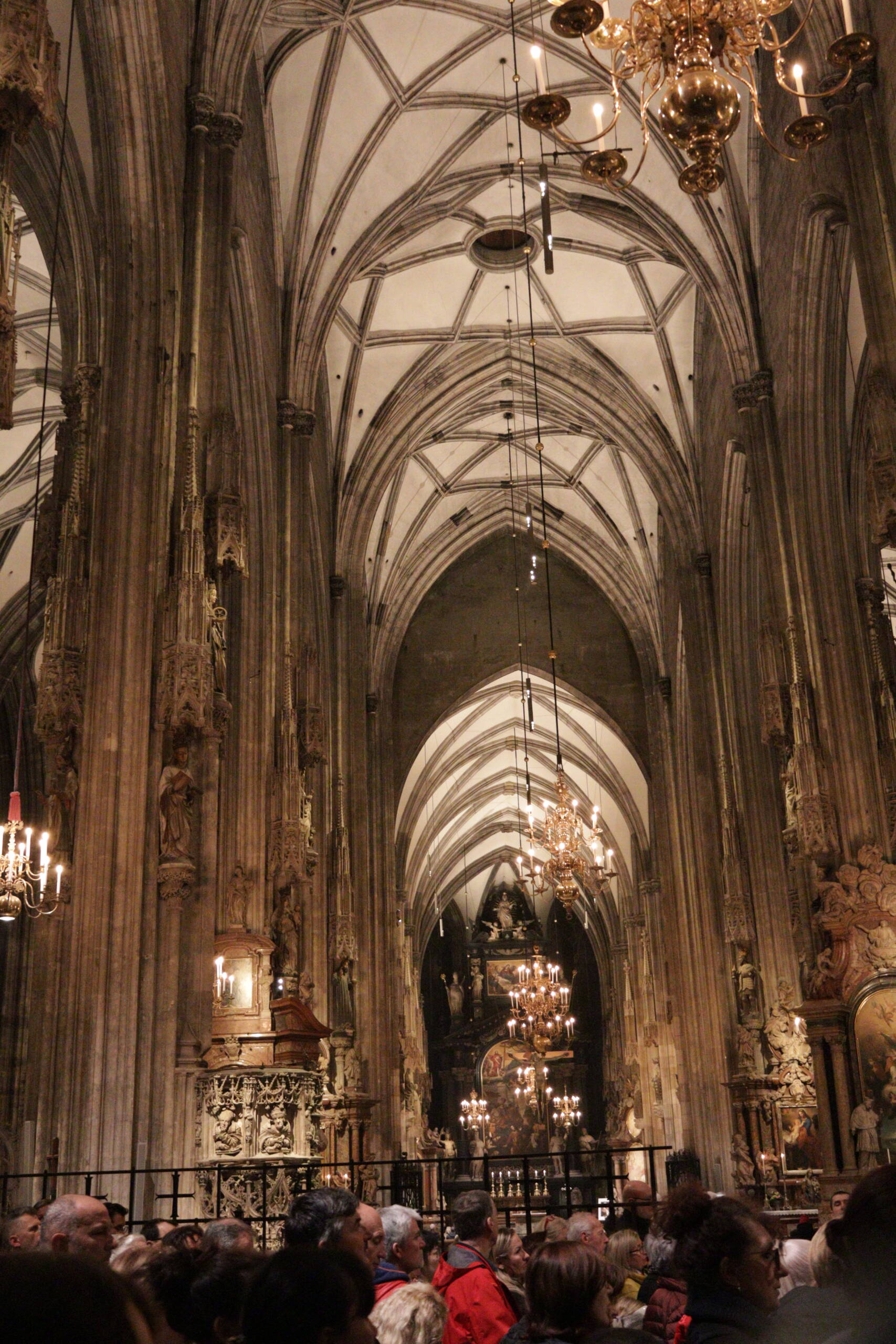The first thing you notice is how the ceiling seems to rise forever, like stone ribs stretching upward in an impossible breath. The vaults curve in long, sweeping arches, pale and ghostlike, while the pillars below are darker and impossovingly tall, their surfaces worked over centuries into lace made of stone. There’s this warm glow from chandeliers—golden drops of light suspended, flickering gently as if the air itself remembers the prayers that have risen here. The crowd below moves as one soft tide, jackets rustling, necks craned. People speak in hushed tones not because anyone told them to, but because the space itself insists on quiet, like a polite but absolute command.

The statues carved into the pillars watch everything. Some faces look stern, others compassionate, all of them worn down a little by time, candle smoke, and the small erosions of history. You can stand quite close and still feel like they’re a step removed, their expression somewhere between human memory and immortal witness. The pulpit to the left is like a miniature cathedral in itself. Every inch is carved: apostles, saints, creatures tucked into corners, sermons made permanent in stone. If you lean in, you start to notice the absurd amount of detail—little curls of hair, folds of robes frozen mid-movement, the kind of craftsmanship that feels almost unreal now.
The central aisle pulls your eye toward the far altar, where paintings and gilded ornament cluster in a kind of controlled visual storm. The chandeliers hanging down the nave form a rhythm of light, each one marking distance like celestial checkpoints. Everything is symmetrical but also slightly irregular, because Gothic spaces were built by hand, hand by hand, decade after decade. It’s that slight unevenness that makes it feel alive. You almost sense that the building is breathing, just slowly, at the pace of centuries.
Standing here, it’s hard not to think about how many lives have passed through this nave. Weddings, funerals, daily masses, coronations, moments of private despair and quiet hope. The stone has heard confessions that were never spoken aloud. It has felt footsteps from emperors and tourists in equal measure. Someone once lit a candle here for a loved one far away. Someone else stood here to escape the cold. It’s a place of grandeur, yes, but also of strange intimacy, where the scale overwhelms yet the atmosphere pulls you inward.
You walk out feeling a little smaller, but not in a bad way. More like someone reminded you that time is large, and we are just passing through it. And that there’s something wonderful about things built to last longer than any single lifetime.
Leave a Reply